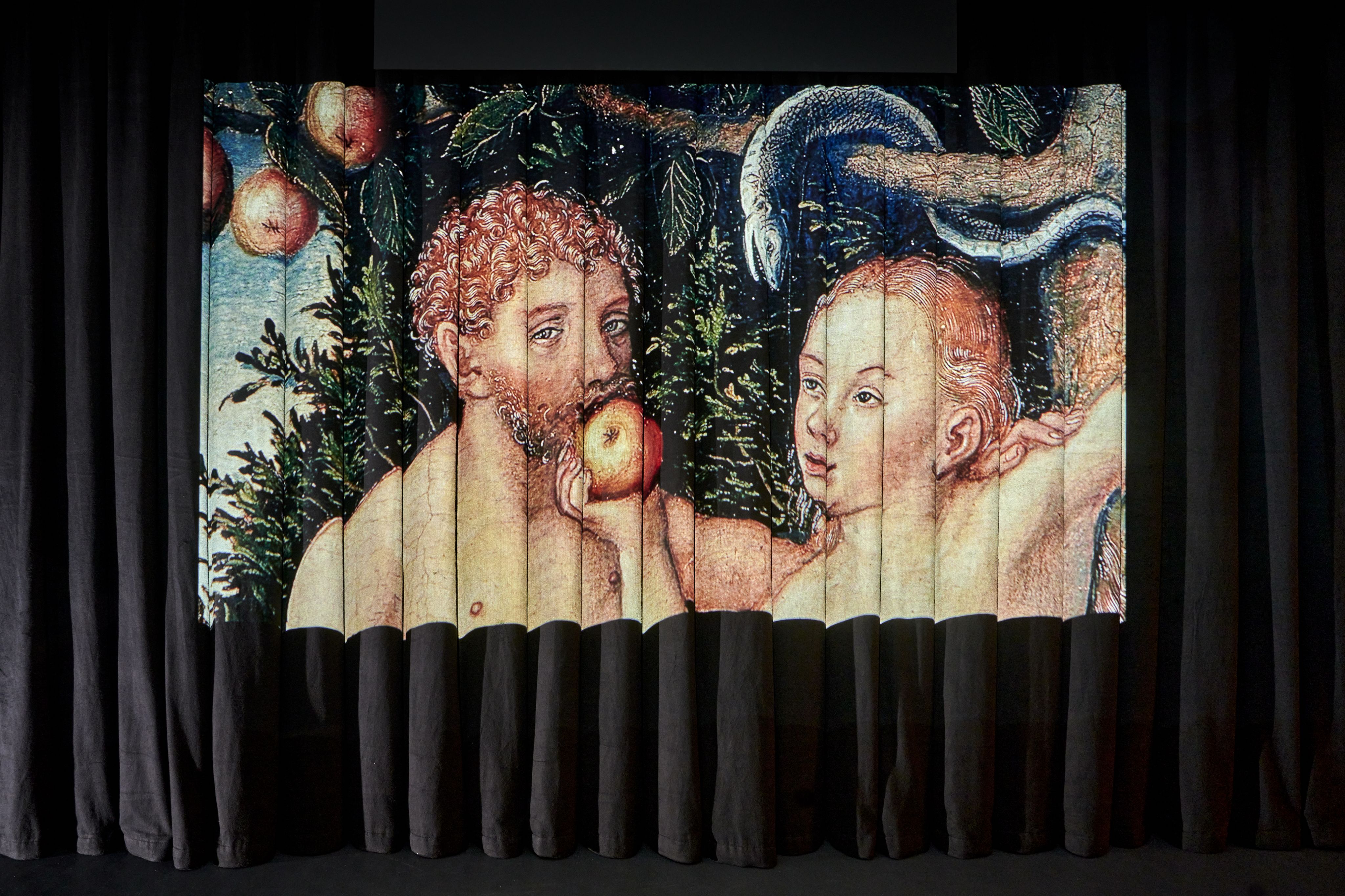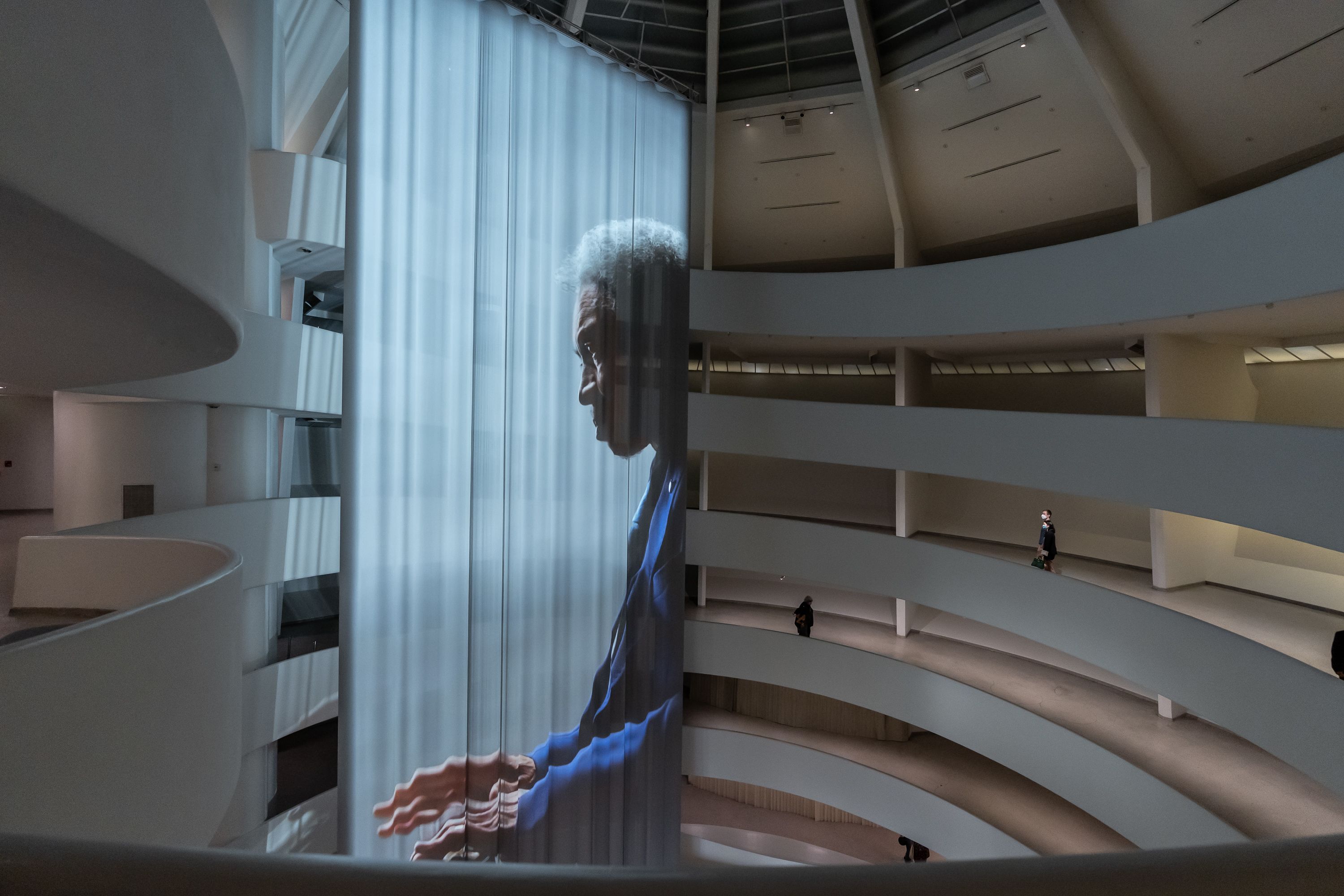Q&A with Wu Tsang
Visiting Artists Program
Distinguished Alumni Lecturer

by Megan Kirby
In the course of her MacArthur Award-winning filmmaking career, Wu Tsang’s (BFA 2004) subject matter has ranged from house music to the queer Los Angeles party scene to the Chinese feminist revolutionary Qiu Jin.
In her latest project, she tackles the literary canon with the adaptation MOBY DICK; Or The Whale. Created as part of Tsang’s artist collective Moved by the Motion, co-founded with Tosh Basco (MFA 2018), the project retells Herman Melville’s classic novel as a silent film with live orchestral accompaniment—reexamining the material’s queer and racial subtexts along the way.
This fall, Tsang will be the distinguished alumni lecturer as part of the School of the Art Institute of Chicago’s (SAIC) Visiting Artists Program. We talk to her about collaboration born of college parties, the lines between fact and fiction, and the process behind staging her latest film.

Wu Tsang, Sudden Rise.
Wu Tsang, Sudden Rise.
How did your SAIC experience influence your practice?
My time in Chicago—and being an art student here—was very formative for my becoming an artist. I actually applied as a transfer student, and I was in the Advanced Painting program as a junior. I got very interested in the work of [faculty member] Gregg Bordowitz, and I talked my way into one of his graduate seminars. And then, I guess the rest is history ‘cause I stayed in contact with him for many years, and now I’m actually here visiting in his program.
A very special thing about Chicago—at least in the early 2000s—is rent was super cheap. So much was possible because we had space, we were young, and we could really create stuff for ourselves. We used to throw a lot of parties and have bands performing in the basement. We had studios. That was a very formative Chicago experience, being able to create that space in that social world for ourselves to help collaborate with each other.
Your work bounces between truth and fiction, sometimes combining the two. What pulls you to that in-between space?
The in-between space is a very comfortable one for me, in a sense that I see both fiction and documentary as construction, and as world building, or shaping of reality. If you have that power, I think there’s somewhat of a responsibility to acknowledge it. And so, for me, using those cinema tricks is also about inviting the audience in on that—an invitation to imagine, as well. That’s something I’m appreciative of about MOBY DICK: we shot the whole thing on a soundstage using rear projection as this virtual reality ocean environment. So, it’s very obvious that it’s not real, but there’s also a way in which the images are constructed so that at a certain point you can just kind of accept that reality.

Wu Tsang, Of Whales. Photo Credit: Matteo De Fina.
Wu Tsang, Of Whales. Photo Credit: Matteo De Fina.
Working collaboratively seems like a hallmark of your career. Can you talk about the process for MOBY DICK?
I am currently in residence at a theater in Zurich, Switzerland. I’m there working with a collective called Moved by the Motion, which is a group of collaborators that have all been working together for many years. It’s interesting: I never saw myself going into theater, but I find that a lot of the root composition aesthetic stuff is the same. With staging for theater, it’s a lot of the same principles of painting or filmmaking.
My agreement with the theater is that I make one live production and one film production every year. And in that case, I sort of was interested in experimenting with a kind of a hybrid format. So MOBY DICK, as it exists in its current form, is a feature length film with a live orchestra that performs the score. When you see it with a live orchestra playing, it does actually have a very different energy than watching a movie in a cinema. You feel the liveness of it. ■

Wu Tsang, Anthem, 2021.
Wu Tsang, Anthem, 2021.

